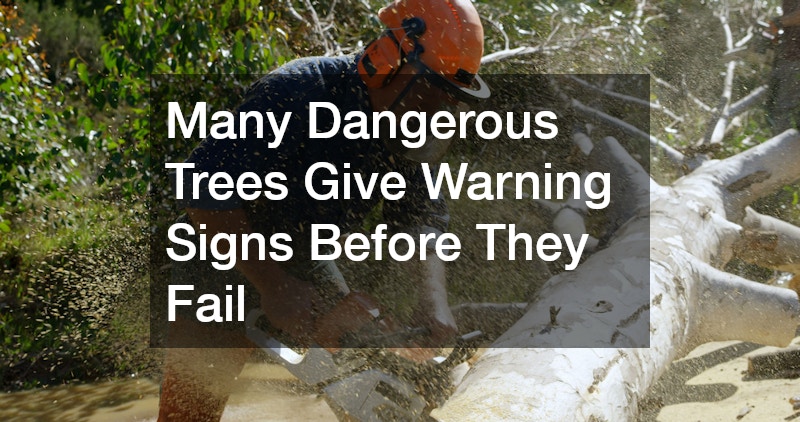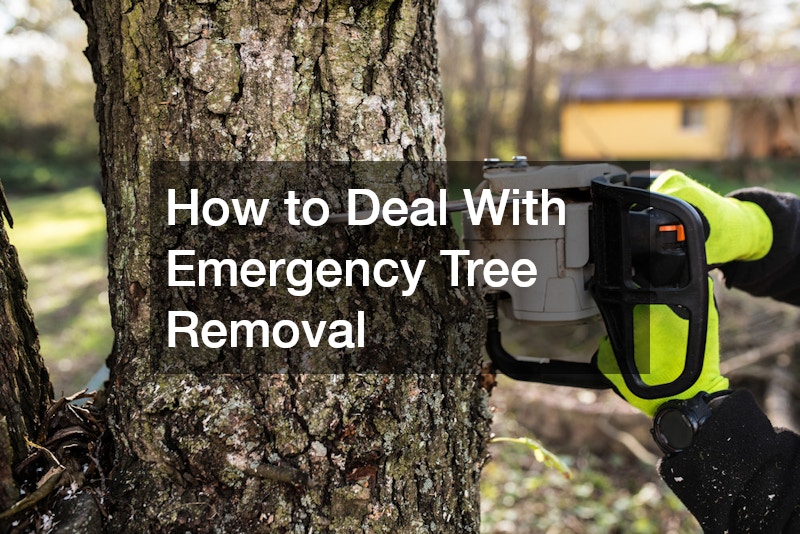Swift action is critical when a tree suddenly becomes a danger to people, property, or nearby utilities. Emergency tree removal is a unique category of tree care requiring urgency and precision, as the risks involved are often much higher than in planned removals. Severe weather, disease, or structural instability can cause trees to fall or drop large branches unexpectedly, creating hazardous situations that demand immediate attention.
Understanding the process ahead of time helps homeowners respond quickly and effectively when needed.
In these high-pressure situations, having the correct information can mean the difference between preventing further damage and dealing with costly consequences. It’s essential to recognize the signs that a tree may fail, know the steps to take when danger is present, and be aware of safety protocols for everyone involved. Property owners can navigate the process more efficiently and confidently during emergencies by learning these fundamentals.
Understanding the Urgency of Emergency Tree Removal
Emergency tree removal differs from routine maintenance because it involves immediate safety or property threats. This urgency often arises from natural disasters like storms, heavy winds, or ice buildup, but can also result from gradual weakening caused by disease or pest infestations. In these situations, delays can worsen the damage, especially if the tree is leaning toward a home, blocking a driveway, or resting against power lines. Addressing the problem quickly reduces the chance of injury or property loss.
Specifically, a damaged tree could press against a roof after a storm, threatening to puncture it with the next gust of wind. It could also be leaning dangerously over a busy street, creating a risk for drivers and pedestrians. In such cases, professional intervention is often needed within hours—not days—to safely secure the area and remove the hazard. Acting promptly not only safeguards people and property but can also limit repair costs.
Recognizing the Signs of Dangerous Trees
Many dangerous trees give warning signs before they fail. Visible cracks in the trunk, large dead branches, or a noticeable lean can all indicate structural weakness. Fungal growths at the base may suggest internal rot, while sudden leaf loss outside of seasonal changes can point to health decline. Spotting these issues early allows for a proactive response before escalating into an emergency.
For example, if you notice a tree’s roots are lifting out of the soil or the bark is peeling away in large sections, it may be on the verge of collapse. Similarly, saturated soil can loosen a tree’s anchoring after heavy rainfall, causing the tree to tilt. Attention to these signs—especially in trees close to homes, power lines, or high-traffic areas—can help you take corrective measures before they create urgent and dangerous conditions.
Contacting Professional Tree Removal Services
When a tree emergency occurs, the safest and most effective approach is to contact a qualified tree removal service immediately. Professionals have the equipment, training, and expertise to handle dangerous situations that are too risky for the average homeowner. They can assess the severity of the hazard, determine the safest removal method, and coordinate with utility companies if needed. This expertise ensures the job is done quickly and without unnecessary damage to surrounding areas.
Specifically, a professional service might use cranes to lift heavy tree sections away from a damaged roof or employ specialized rigging techniques to prevent branches from falling onto nearby structures. They also have the necessary protective gear and insurance coverage, reducing the homeowner’s liability. In high-risk cases—such as when a homeowner’s tree is tangled in power lines—trained crews work in tandem with electrical companies to ensure the area is de-energized before removal begins.
Ensuring Safety During the Removal Process
Safety is the top priority when dealing with emergency tree removal. The area should be cleared of people and pets, and nearby structures should be assessed for potential impact. Only individuals with proper training and equipment should attempt removal, as unstable trees can shift suddenly and cause serious injury. Keeping a safe perimeter reduces the risk of harm and allows the removal team to work efficiently.
Safety measures may include setting up warning cones or barricades to keep passersby away, wearing protective helmets and high-visibility vests, and using harness systems for climbing or cutting at heights. Professionals often work in coordinated teams, with one person operating machinery while others manage the ground area. These protocols are designed to control each removal stage and prevent unexpected accidents, especially in unpredictable weather conditions or unstable environments.
Emergency tree removal is a complex and often high-stakes process that demands quick thinking, specialized skills, and a strong focus on safety. By understanding the urgency involved, recognizing early warning signs, and knowing when to call professionals, property owners can respond effectively to dangerous situations. Just as critical, preventive care can reduce the need for emergency intervention, saving time, money, and stress in the long run.




